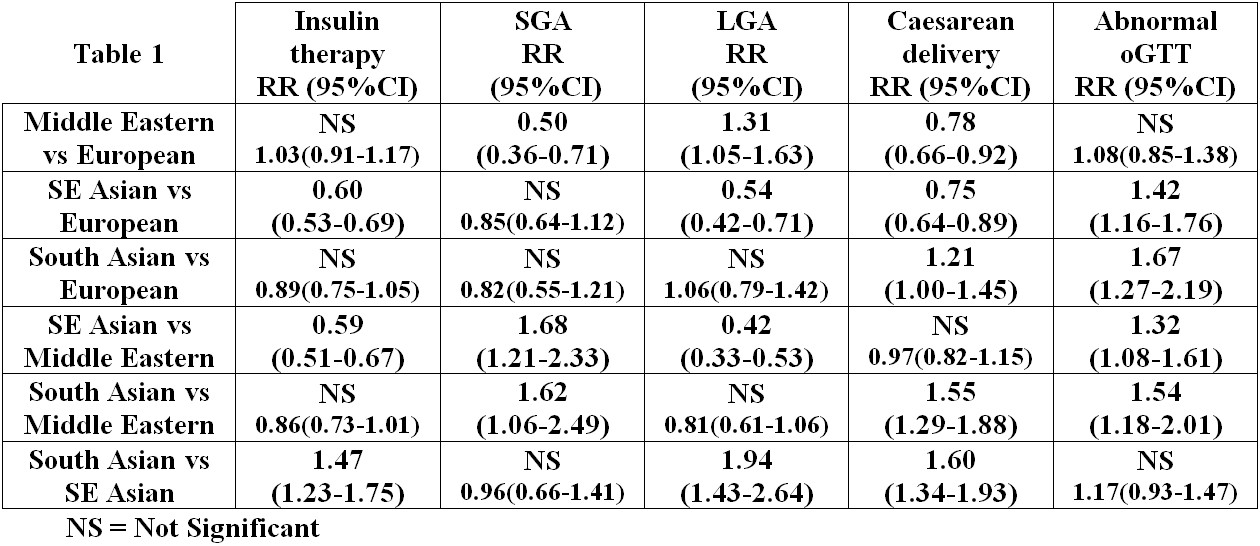Oral Presentation Australian Diabetes Society and the Australian Diabetes Educators Association Annual Scientific Meeting 2014
Ethnic differences in pregnancy outcomes in women with Gestational Diabetes Mellitus (#147)
Background: Treatment of Gestational Diabetes Mellitus (GDM) according to Australasian Diabetes in Pregnancy Society (ADIPS) treatment targets, assumes that the risk of associated adverse pregnancy outcomes does not differ by ethnicity.
Aim: To compare the incidence of adverse pregnancy outcomes in four ethnic groups.
Methods: We compared de-identified prospectively collected data (1993-2013), for singleton births from women diagnosed by ADIPS(1998) criteria(1), in those with complete data including: ethnicity, treatment modality and birth outcomes. We thence assessed 5 outcomes: insulin use, caesarean delivery, large and small for gestational age birthweight (LGA, SGA), plus 6-8 week post-partum Glucose Tolerance Test (oGTT) data (where available), in the four largest ethnic groups (94.7% of our cohort): European, Middle Eastern, South-East Asian and South Asian. We calculated relative risk (RR) and associated 95% confidence intervals (95%CI). Birthweights were categorized SGA(<10th percentile) and LGA(>90th percentile) using the website www.gestation.net(2).
Results: There were 3077 records in the 4 ethnic groups: European (n=720); Middle Eastern (n=884); South-East Asian (SE Asian) (n=1117); South Asian (n=356), with post-partum oGTT data available for 1855 (60.3%). Table 1 below shows the RRs, and 95%CI for each pregnancy outcome, as well as the risk of an abnormal post-partum oGTT result.

Although women of Middle Eastern and South Asian backgrounds appear at greater risk of an LGA infant, those of SE and South Asian background appear to be at greater risk of having an SGA infant and abnormal post-partum oGTT result. South Asian women are most likely to have a caesarean delivery compared to the other three ethnic groups examined.
Conclusions: Although further research is needed, in this cohort it appears that the risk of adverse pregnancy outcomes and an abnormal post-partum oGTT differ significantly by ethnicity. These results suggest that GDM management could benefit from being more individualised, taking into account ethnicity associated risk.
Acknowledgements: We wish to thank all of the Diabetes Educators who have collected data and maintained the database and Professor Jason Gardosi for permission to use his bulk centile calculator.
- Hoffman L, Nolan C, Wilson JD, Oats JJN, Simmons D. Gestational diabetes mellitus – management guidelines. The Australasian Diabetes in Pregnancy Society. Med J Aust 1998; 169:93–97.
- Gardosi J, Francis A. Customised Weight Centile Calculator – GROW-Centile v5.15/6.4 2009. Gestation Network, www.gestation.net (v5.15: individual; v6.4: bulk centiles).